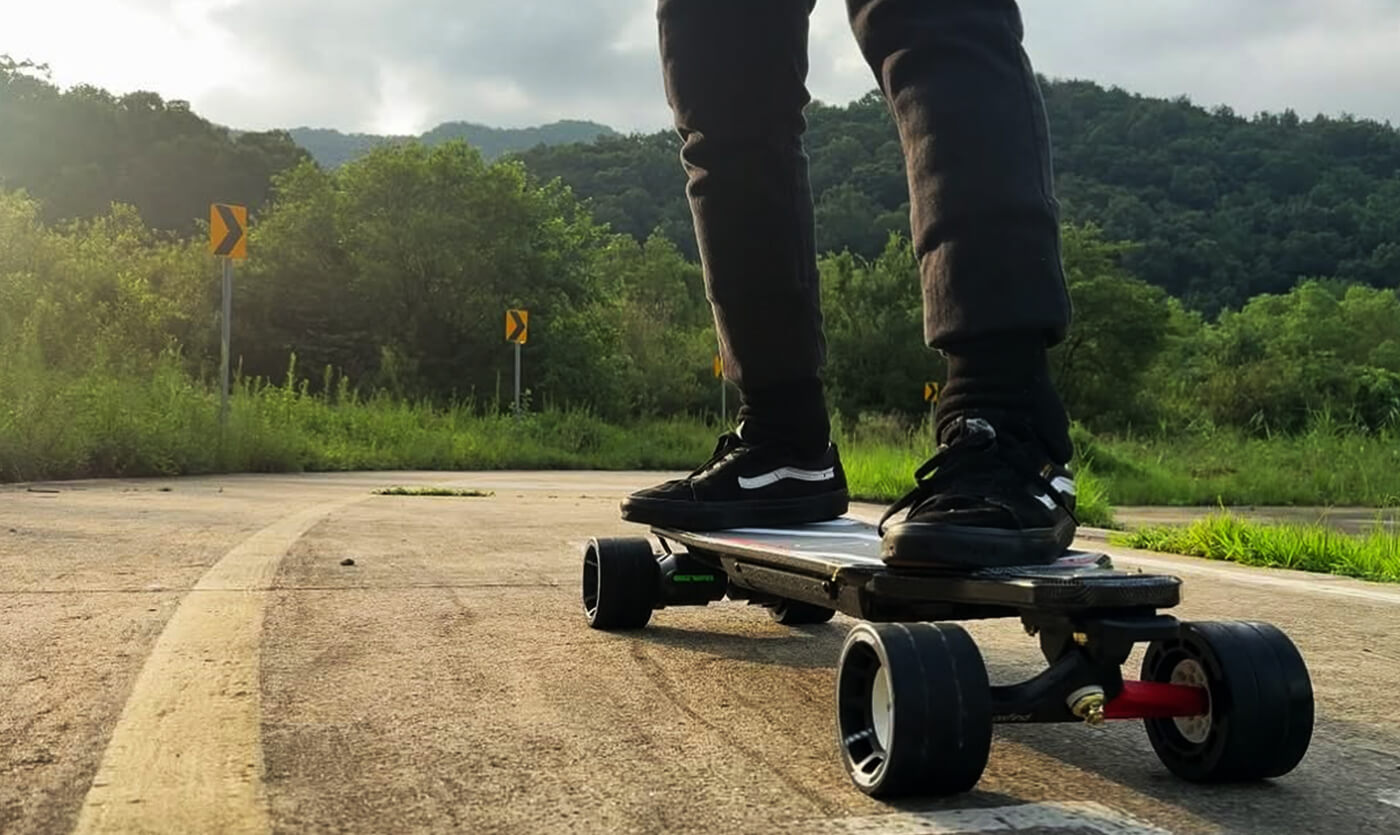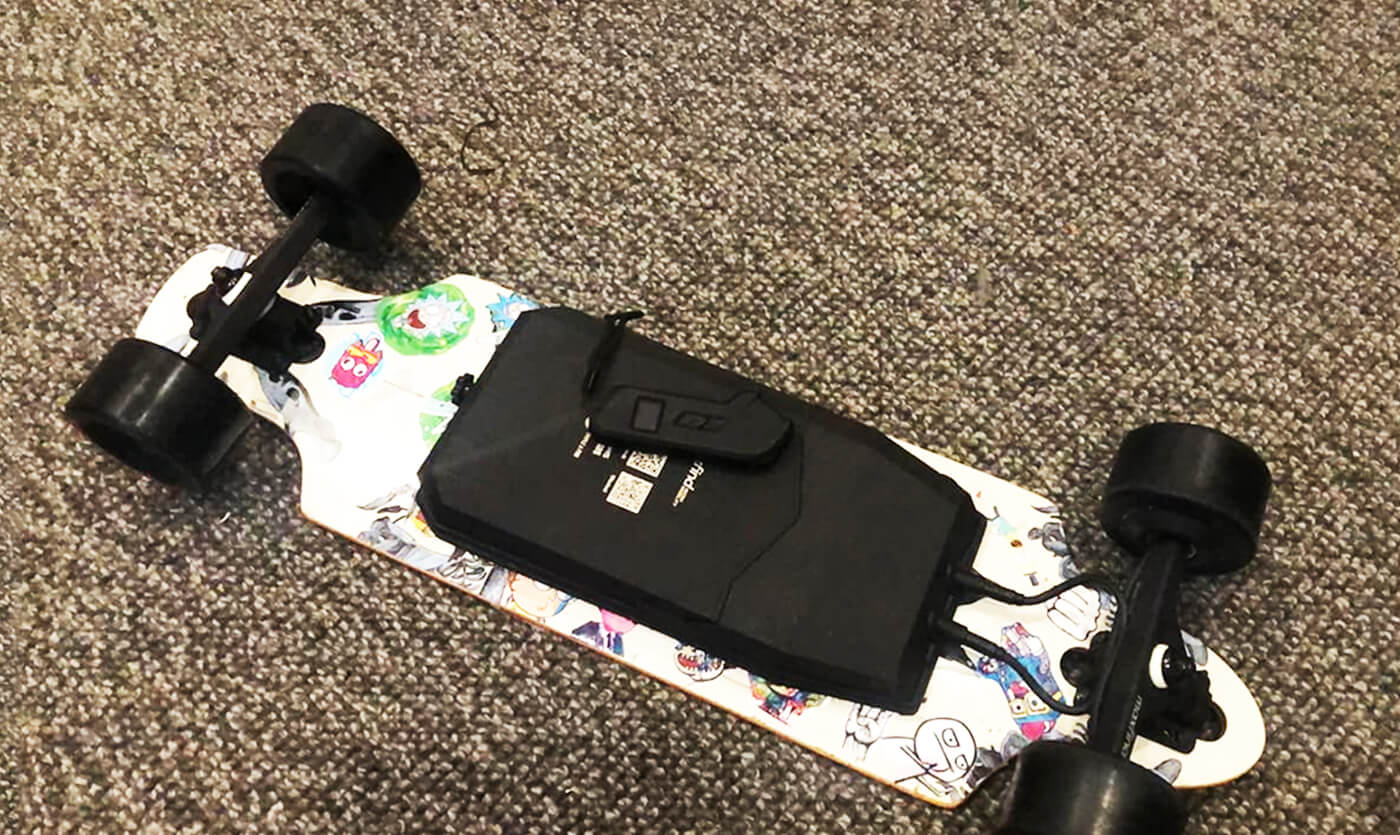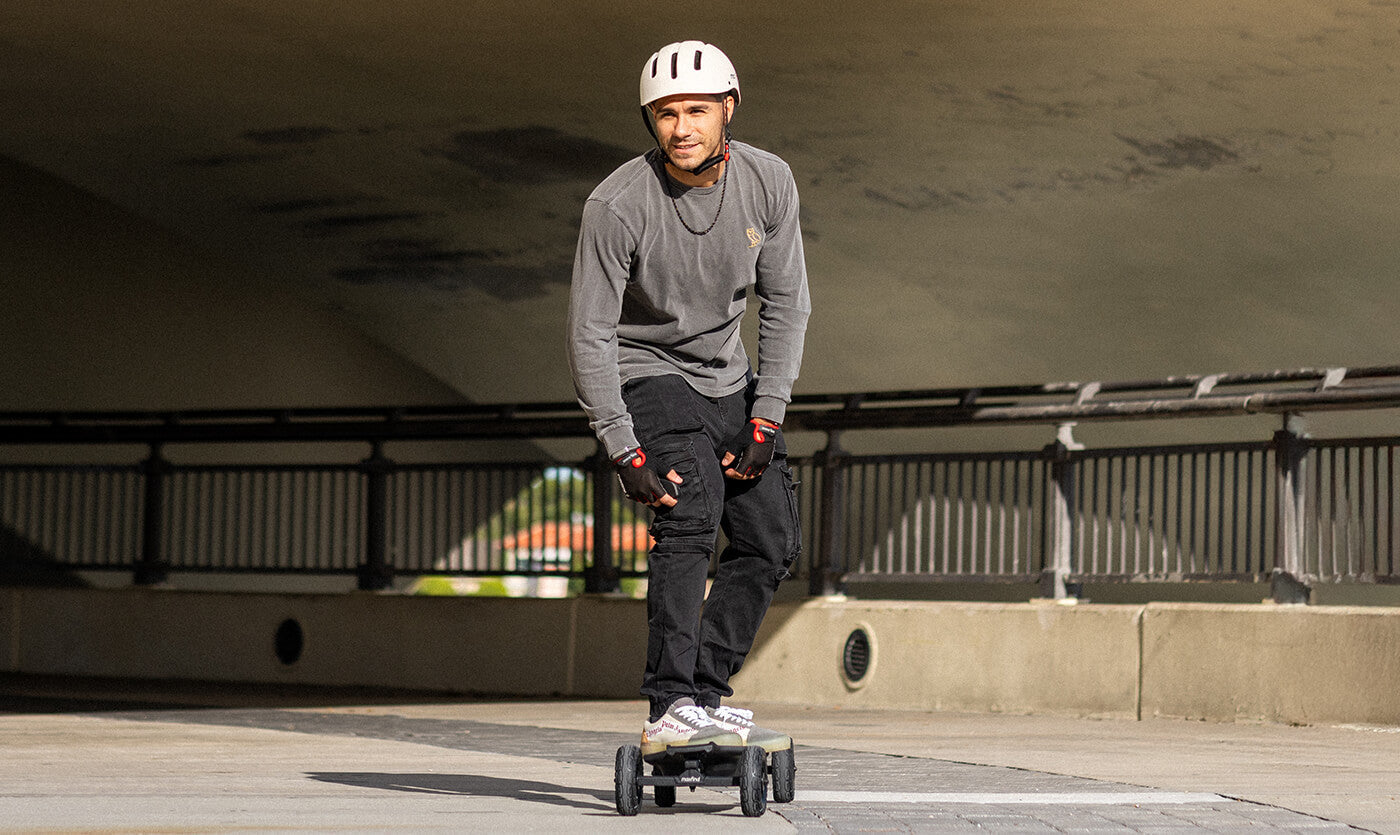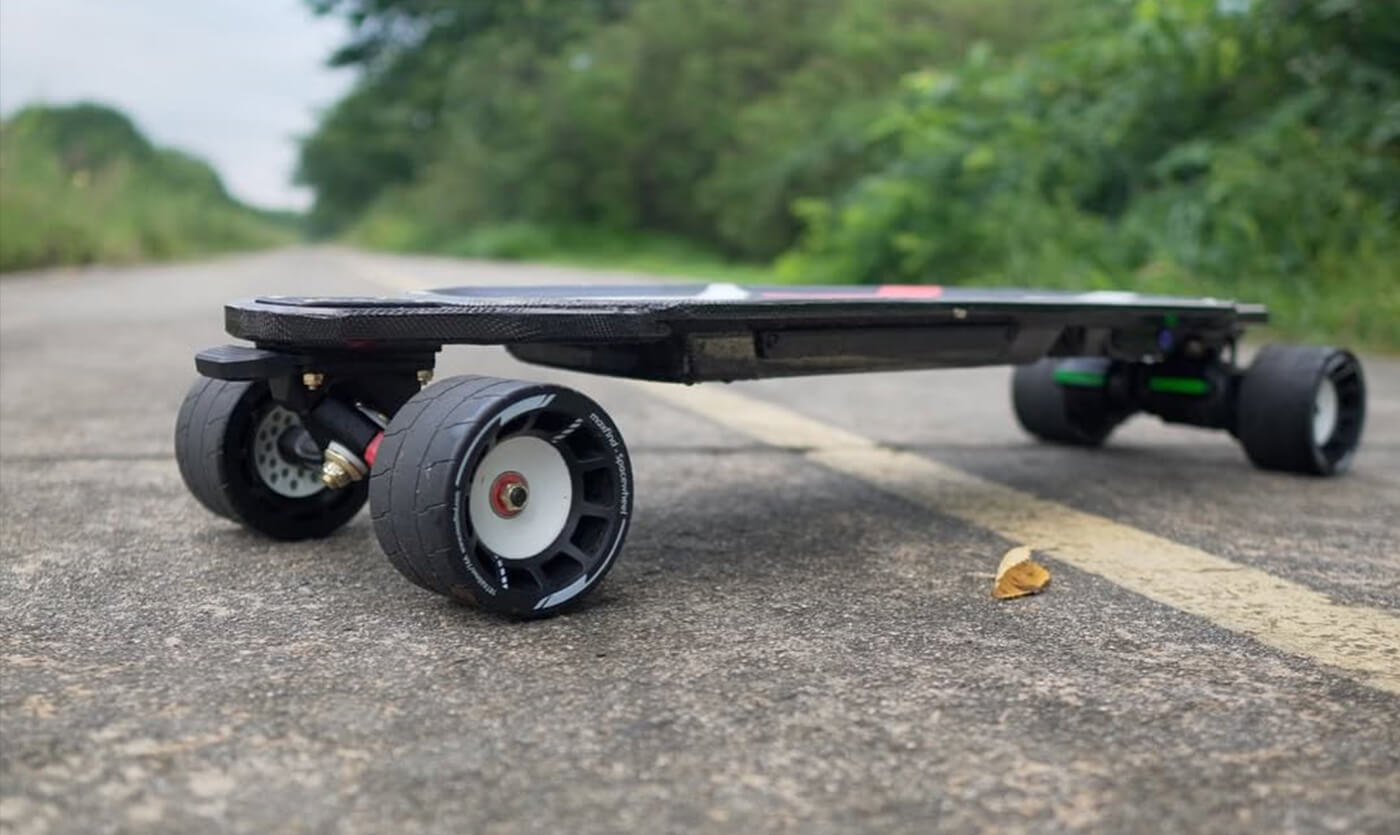An Electric Skateboard looks a lot like the plank you kicked around as a kid, but a battery-powered drive train has quietly moved the genre from playground to personal-mobility contender. Instead of pushing with one foot, you squeeze a handheld remote and watch the board pull away—silently, smoothly, and miles farther than a single kick could ever take you. This article breaks the tech down in plain English so beginners can decide whether an electric skateboard belongs under their feet, under their desk at work, or maybe both.

How The Core Components Work Together
Deck, Trucks, And Wheels
Think of the deck as the chassis of a tiny EV. Maple or bamboo adds springy flex, while carbon or fiberglass stiffens the ride for higher speeds. Trucks let the board lean into turns, and larger, softer wheels (often 90 – 120 mm urethane or rubberized sleeves) absorb cracks a regular skateboard would transmit straight to your knees.
Motor System (Hub Or Belt-Drive)
The motor is where the magic—and most of the debate—lives. Hub motors hide inside the rear wheels, making the setup whisper-quiet and almost maintenance-free. Belt-drive systems place the motors under the deck and spin the wheels with a toothed belt. They’re a bit louder and need occasional tensioning, but they deliver punchier acceleration and let you swap wheels freely.
Battery Pack And Power Delivery
A lithium-ion pack—usually 10S2P to 12S4P in beginner boards—slides under the deck like a slim lunch box. Capacity (measured in watt-hours) dictates range, but cold weather, rider weight, and hill climbs all nibble at that number. Most packs include a battery-management system (BMS) to keep cells balanced and to cut power before they’re over-discharged.
Electronic Speed Controller (ESC)
The ESC is the board’s brain. It translates the throttle signal from the remote into precise pulses of current for the motors, handles regenerative braking, and monitors temperature so nothing overheats on long downhill runs.
Remote And On-Board Sensors
A thumb wheel or trigger on the remote sends acceleration and braking commands over 2.4 GHz or Bluetooth. Gyros and current sensors on the board feed real-time data to the ESC, smoothing power delivery so beginners can roll on without sudden jerks.

The Motion Flow: From Trigger Pull To Wheel Spin
-
You push the throttle forward.
-
The remote beams that signal to the ESC in milliseconds.
-
The ESC draws just enough current from the battery to meet your request.
-
Motors convert electricity into torque, spinning the wheels.
-
Release the throttle—or roll it back for braking—and the ESC reverses the current, feeding energy back into the battery while slowing the board.
Understanding this loop demystifies the ride: every speed change is a conversation among battery, ESC, and motor, all orchestrated by your thumb.

Safety First: Riding And Maintenance Basics
A modern electric skateboard feels stable once you’re rolling, yet the added speed means falls hit harder. Pad up—even if you never bothered on a kick board—and run through a 30-second pre-ride check: verify remote battery, inspect belts or wheel hubs, and flex the deck to spot hidden cracks.
Protective Gear Checklist For New Riders
-
Certified skate helmet
-
Knee and elbow pads
-
Wrist guards (the most common fracture site)
-
Reflective vest or lights for dusk commutes
Keep bearings clean, belts tensioned, and batteries charged to 50 % for longer storage, and your board will stay spry season after season.

Performance Essentials: Range, Speed, And Hills
A beginner board typically tops out around 20 mph (32 km/h) and covers 8 – 12 miles on a full charge, but numbers shift in real life. Headwinds, coarse asphalt, and steep streets mean the motor works harder and the battery drains faster. Swapping to larger wheels can claw back comfort on rough pavement but may trim torque on hills.
Factors That Affect Real-World Range
-
Rider Weight – Heavier riders demand more current per mile.
-
Terrain – Continuous climbs sap power; long descents add a little back via regen.
-
Temperature – Lithium cells lose efficiency in cold weather.
-
Tire Pressure & Wheel Durometer – Softer wheels grip and cushion but roll less freely.
Legal And Practical Considerations
Urban rules vary. Many U.S. cities cap e-board speeds at 15 mph on bike paths and outlaw sidewalk riding altogether. Airlines limit lithium batteries to under 100 Wh in carry-ons, so most travel-ready boards ship with swappable “flight packs.” Check local statutes before carving through traffic; a quick read of municipal code can save a hefty fine.
Is An Electric Skateboard Right For You?
If your daily trip is under five miles, parking fees make you twitch, and you enjoy a breeze without breaking a sweat, an Electric Skateboard could replace both last-mile bus rides and weekend joy-rides. Tech-shy commuters will appreciate hub-motor simplicity, while tinkerers might lean toward belt-drive torque and upgrade paths. Start slow, respect the learning curve, and you’ll discover a fun, efficient way to shrink the city around you.
If you decide an Electric Skateboard is the right commuting companion, explore Maxfind’s line-up of boards—from ultra-portable minis to long-range all-terrain cruisers. Maxfind’s mission is making commuting easy and fun, and each model is built around that promise.
Recommended reading: What to Wear for Electric Skateboarding






Share:
Top Speed and Range: Understanding the Limits of Electric Scooters
The Ultimate Beginner’s Guide to Buying an Electric Skateboard